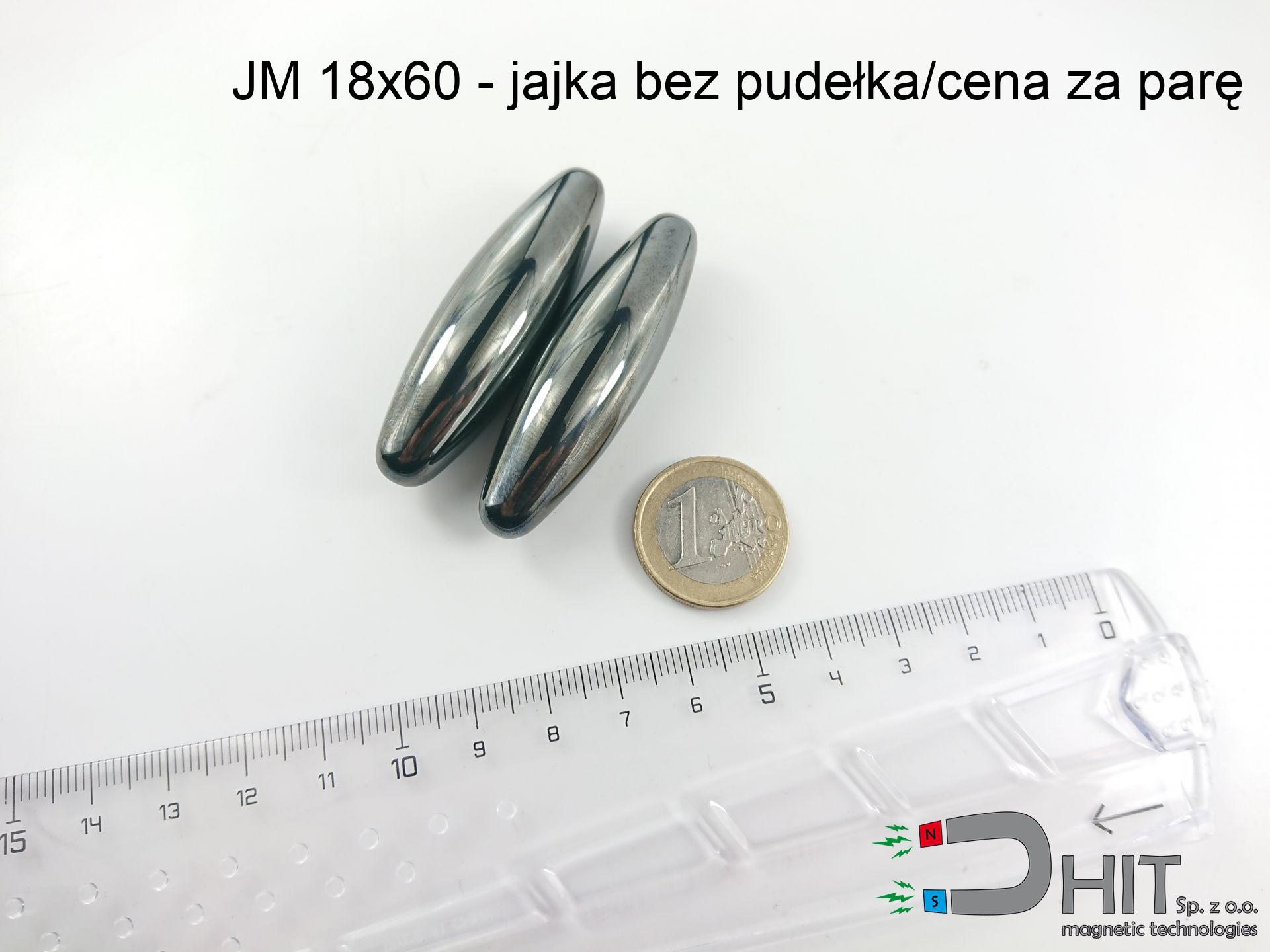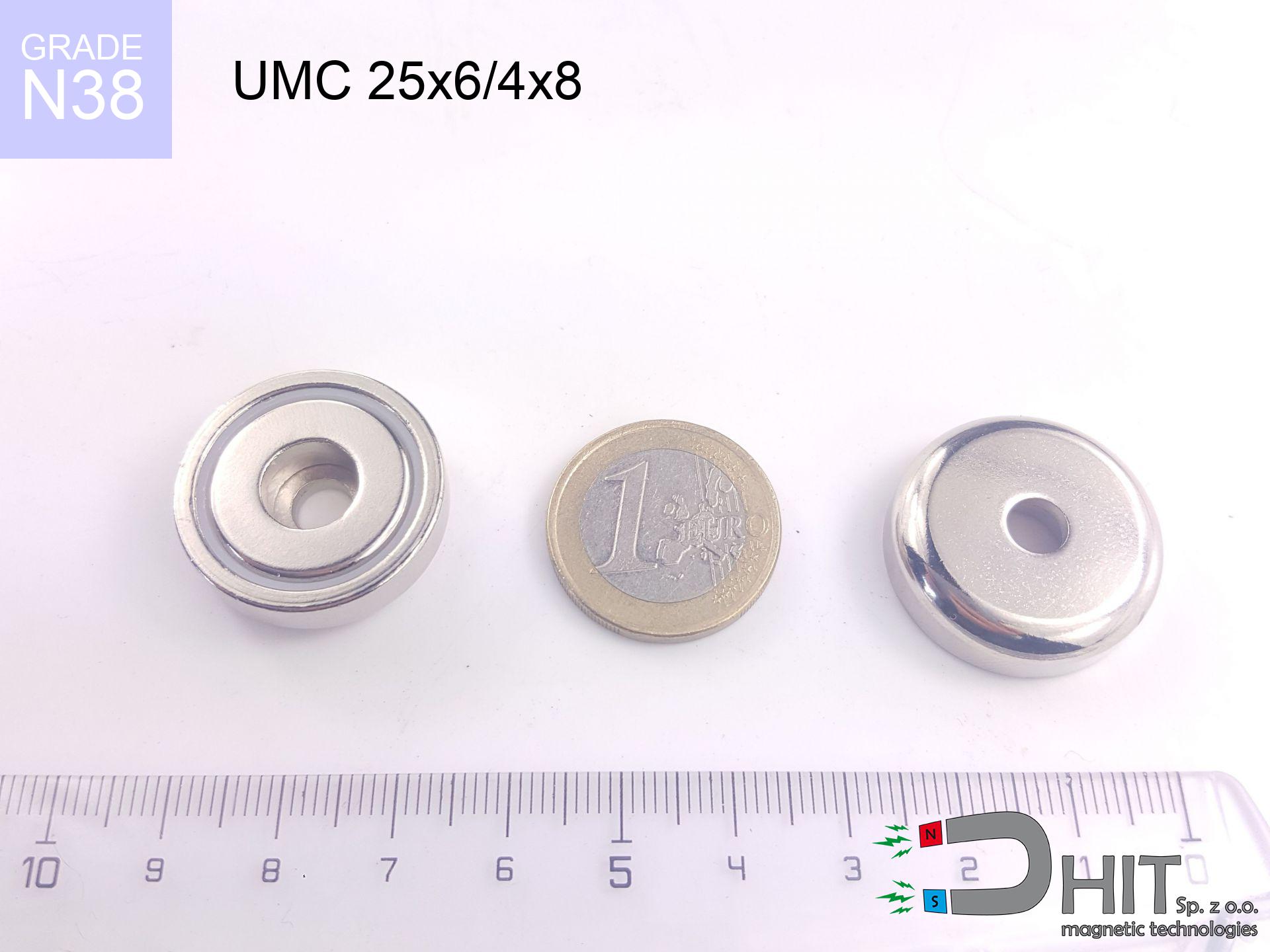SM 32x250 [2xM8] / N52 - magnetic separator
magnetic separator
Catalog no 130362
GTIN/EAN: 5906301813101
Diameter Ø
32 mm [±1 mm]
Height
250 mm [±1 mm]
Weight
1285 g
Magnetic Flux
~ 10 000 Gauss [±5%]
824.10 ZŁ with VAT / pcs + price for transport
670.00 ZŁ net + 23% VAT / pcs
bulk discounts:
Need more?
Contact us by phone
+48 22 499 98 98
alternatively get in touch via
form
our website.
Strength as well as shape of magnets can be verified with our
power calculator.
Order by 14:00 and we’ll ship today!
Product card - SM 32x250 [2xM8] / N52 - magnetic separator
Specification / characteristics - SM 32x250 [2xM8] / N52 - magnetic separator
| properties | values |
|---|---|
| Cat. no. | 130362 |
| GTIN/EAN | 5906301813101 |
| Production/Distribution | Dhit sp. z o.o. |
| Country of origin | Poland / China / Germany |
| Customs code | 85059029 |
| Diameter Ø | 32 mm [±1 mm] |
| Height | 250 mm [±1 mm] |
| Weight | 1285 g |
| Material Type | Stainless steel AISI 304 / A2 |
| Magnetic Flux | ~ 10 000 Gauss [±5%] |
| Size/Mount Quantity | 2xM8 |
| Polarity | circumferential - 9 poles |
| Casing Tube Thickness | 1 mm |
| Manufacturing Tolerance | ±1 mm |
Magnetic properties of material N52
| properties | values | units |
|---|---|---|
| remenance Br [min. - max.] ? | 14.2-14.7 | kGs |
| remenance Br [min. - max.] ? | 1420-1470 | mT |
| coercivity bHc ? | 10.8-12.5 | kOe |
| coercivity bHc ? | 860-995 | kA/m |
| actual internal force iHc | ≥ 12 | kOe |
| actual internal force iHc | ≥ 955 | kA/m |
| energy density [min. - max.] ? | 48-53 | BH max MGOe |
| energy density [min. - max.] ? | 380-422 | BH max KJ/m |
| max. temperature ? | ≤ 80 | °C |
Physical properties of sintered neodymium magnets Nd2Fe14B at 20°C
| properties | values | units |
|---|---|---|
| Vickers hardness | ≥550 | Hv |
| Density | ≥7.4 | g/cm3 |
| Curie Temperature TC | 312 - 380 | °C |
| Curie Temperature TF | 593 - 716 | °F |
| Specific resistance | 150 | μΩ⋅cm |
| Bending strength | 250 | MPa |
| Compressive strength | 1000~1100 | MPa |
| Thermal expansion parallel (∥) to orientation (M) | (3-4) x 10-6 | °C-1 |
| Thermal expansion perpendicular (⊥) to orientation (M) | -(1-3) x 10-6 | °C-1 |
| Young's modulus | 1.7 x 104 | kg/mm² |
Table 1: Rod construction
SM 32x250 [2xM8] / N52
| Parameter | Value | Description / Unit |
|---|---|---|
| Diameter (Ø) | 32 | mm |
| Total length | 250 | mm (L) |
| Active length | 214 | mm |
| Section count | 9 | modules |
| Dead zone | 36 | mm (2x 18mm starter) |
| Weight (est.) | ~1528 | g |
| Active area | 215 | cm² (Area) |
| Housing material | AISI 304 | 1.4301 (Inox) |
| Surface finish | Ra < 0.8 µm | Polished |
| Temp. class | 80°C | Standard (N) |
| Force loss (at max °C) | -12.8% | Reversible loss (physics) |
| Force (calculated) | 37 | kg (theor.) |
| Induction (surface) | ~9 500 | Gauss (Max) |
Chart 2: Field profile (9 sections)
Chart 3: Temperature performance
Elemental analysis
| iron (Fe) | 64% – 68% |
| neodymium (Nd) | 29% – 32% |
| boron (B) | 1.1% – 1.2% |
| dysprosium (Dy) | 0.5% – 2.0% |
| coating (Ni-Cu-Ni) | < 0.05% |
Ecology and recycling (GPSR)
| recyclability (EoL) | 100% |
| recycled raw materials | ~10% (pre-cons) |
| carbon footprint | low / zredukowany |
| waste code (EWC) | 16 02 16 |
Other products
Strengths and weaknesses of rare earth magnets.
Advantages
- They virtually do not lose strength, because even after 10 years the performance loss is only ~1% (according to literature),
- They retain their magnetic properties even under external field action,
- A magnet with a smooth silver surface has an effective appearance,
- The surface of neodymium magnets generates a concentrated magnetic field – this is one of their assets,
- Thanks to resistance to high temperature, they can operate (depending on the form) even at temperatures up to 230°C and higher...
- Thanks to the possibility of flexible molding and adaptation to specialized needs, neodymium magnets can be created in a wide range of shapes and sizes, which amplifies use scope,
- Fundamental importance in modern technologies – they find application in data components, drive modules, advanced medical instruments, as well as industrial machines.
- Thanks to efficiency per cm³, small magnets offer high operating force, occupying minimum space,
Weaknesses
- To avoid cracks upon strong impacts, we suggest using special steel housings. Such a solution secures the magnet and simultaneously increases its durability.
- Neodymium magnets lose power when exposed to high temperatures. After reaching 80°C, many of them experience permanent weakening of power (a factor is the shape and dimensions of the magnet). We offer magnets specially adapted to work at temperatures up to 230°C marked [AH], which are very resistant to heat
- Due to the susceptibility of magnets to corrosion in a humid environment, we recommend using waterproof magnets made of rubber, plastic or other material stable to moisture, when using outdoors
- Limited possibility of producing threads in the magnet and complex shapes - recommended is casing - magnet mounting.
- Potential hazard to health – tiny shards of magnets can be dangerous, in case of ingestion, which is particularly important in the context of child health protection. It is also worth noting that tiny parts of these products can disrupt the diagnostic process medical in case of swallowing.
- Higher cost of purchase is one of the disadvantages compared to ceramic magnets, especially in budget applications
Holding force characteristics
Breakaway strength of the magnet in ideal conditions – what affects it?
- with the application of a yoke made of low-carbon steel, guaranteeing full magnetic saturation
- possessing a massiveness of minimum 10 mm to avoid saturation
- with a surface free of scratches
- with direct contact (without coatings)
- during detachment in a direction vertical to the plane
- at ambient temperature room level
Practical lifting capacity: influencing factors
- Distance – the presence of foreign body (paint, tape, air) acts as an insulator, which lowers power rapidly (even by 50% at 0.5 mm).
- Force direction – declared lifting capacity refers to pulling vertically. When slipping, the magnet exhibits significantly lower power (typically approx. 20-30% of maximum force).
- Plate thickness – too thin plate causes magnetic saturation, causing part of the power to be lost into the air.
- Plate material – low-carbon steel gives the best results. Alloy steels reduce magnetic permeability and holding force.
- Surface condition – ground elements ensure maximum contact, which improves force. Uneven metal weaken the grip.
- Operating temperature – neodymium magnets have a negative temperature coefficient. At higher temperatures they are weaker, and at low temperatures gain strength (up to a certain limit).
Lifting capacity testing was performed on plates with a smooth surface of suitable thickness, under a perpendicular pulling force, whereas under attempts to slide the magnet the holding force is lower. Moreover, even a small distance between the magnet’s surface and the plate decreases the lifting capacity.
Precautions when working with NdFeB magnets
Data carriers
Equipment safety: Neodymium magnets can ruin data carriers and sensitive devices (pacemakers, hearing aids, timepieces).
Beware of splinters
Beware of splinters. Magnets can fracture upon violent connection, launching sharp fragments into the air. We recommend safety glasses.
Operating temperature
Regular neodymium magnets (grade N) undergo demagnetization when the temperature surpasses 80°C. Damage is permanent.
Health Danger
Individuals with a heart stimulator must keep an absolute distance from magnets. The magnetism can stop the operation of the life-saving device.
Mechanical processing
Powder created during cutting of magnets is combustible. Do not drill into magnets without proper cooling and knowledge.
Serious injuries
Large magnets can smash fingers in a fraction of a second. Do not place your hand betwixt two attracting surfaces.
Do not underestimate power
Before starting, check safety instructions. Uncontrolled attraction can destroy the magnet or hurt your hand. Think ahead.
Nickel coating and allergies
Medical facts indicate that nickel (the usual finish) is a strong allergen. For allergy sufferers, prevent touching magnets with bare hands or opt for encased magnets.
Danger to the youngest
NdFeB magnets are not intended for children. Eating several magnets may result in them pinching intestinal walls, which constitutes a severe health hazard and requires immediate surgery.
Impact on smartphones
GPS units and mobile phones are highly sensitive to magnetic fields. Close proximity with a strong magnet can permanently damage the internal compass in your phone.

![Magnetic bar SM 32x250 [2xM8] / N52 Magnetic bar SM 32x250 [2xM8] / N52](https://cdn3.dhit.pl/graphics/banners/magnet.webp)
![SM 32x250 [2xM8] / N52 - magnetic separator](https://cdn3.dhit.pl/graphics/products/sm-32x250-2xm8-guf.jpg)



![UMP 97x40 [M8+M10] GW F300 kg / N38 - search holder UMP 97x40 [M8+M10] GW F300 kg / N38 - search holder](https://cdn3.dhit.pl/graphics/products/ump97x40-m8+m10-gw-f-300-kg-kic.jpg)

